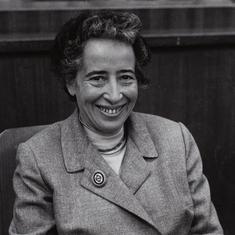One year onward, things are different. The honeymoon is over. As the second season of the ISL kicks off on Saturday with defending champions Atletico De Kolkata facing off against semi-finalists Chennaiyin FC, this edition will be keenly watched but not just for what happens on the pitch. The voices of dissent, so subdued in the last edition, are making themselves heard now. Criticism that the ISL, rather than developing Indian football, is actually contributing to its decline has become a recurring theme. This is helped by the fact that the Indian football team’s performances in the last year have not seen much improvement.
This year, the ISL cannot just be content in delivering an entertaining tournament to the crowds – it must go beyond and convince fans that it is indeed committed to what its chairperson Nita Ambani keeps repeating ad nauseam: developing Indian football.
More star power
There is more star power on the rosters now. Unlike last year, when some top Indian footbalers were unable to play in the ISL due to contractual commitments, there are no such worries now – this edition of the ISL will see top Indian talent like Sunil Chhetri (Mumbai FC), Robin Singh (Delhi Dynamos) and Eugeneson Lyngdoh (Pune FC) turn out for their respective franchises. The international front sees bigger names – Roberto Carlos has been roped in by Delhi to be their player-manager while former Chelsea man Adrian Mutu is Pune’s icon player. Lucio, a member of the Brazilian squad which lifted the 2002 World Cup, will be part of Zico’s FC Goa but it remains to be seen if these superstars can roll back the years. In that respect, both Chennaiyin and Atletico seem to have made canny moves with Chennaiyin retaining their last year’s icon player Elano who was a key figure for them last year while Atletico have dispensed with the services of Luis Garcia and have brought in the 33-year-old Portuguese Helder Postiga as their marquee player, the youngest marquee player in the tournament.
More than the football though, there will be a greater focus on what happens off the field. Even before the season started, the ISL has started off on the wrong foot, inviting criticism from all quarters for deciding to release Indian national players only four days before India’s 2018 World Cup qualifiers against Turkmenistan and Oman in October. Critics argue that the players should have been released much earlier, considering the importance of these matches and allege that it is a clear indicator that the ISL is not concerned about the national team’s wellbeing.
Riding the criticism
To be fair, much of the criticism being levelled at the ISL should be directed towards the All India Football Federation. Take the criticism over conducting two football leagues in the same country, for example. It is not the ISL’s fault that the AIFF decided to start the tournament without a clear roadmap about what to do with the I-League. Regarding the impending closure of certain I-League clubs – while the ISL cannot be blamed for what is clearly an AIFF problem, it can use this opportunity to create some goodwill by proactively trying to engage with I-League clubs by jointly developing young talent, sharing training facilities and creating partnerships.
More than anything, the second season of the ISL will provide a clearer picture on the tournament’s viability. Despite the glamour and the crowds in the first season, a report in the Times of India claimed that most of the franchises are still in the red. Though the owners of most franchises have taken a defiant stand and declared that they are in for the long haul, a lot is riding on the second season. The first season had the curiosity factor. If the second season sees a dip in crowds and advertising, some team-owners might have second thoughts about continuing with the venture.
“Come on, India, let’s football”, screams the tagline of the ISL. For the sake of Indian football, let us hope the focus is actually on India this time rather than on those over-the-hill superstars.










